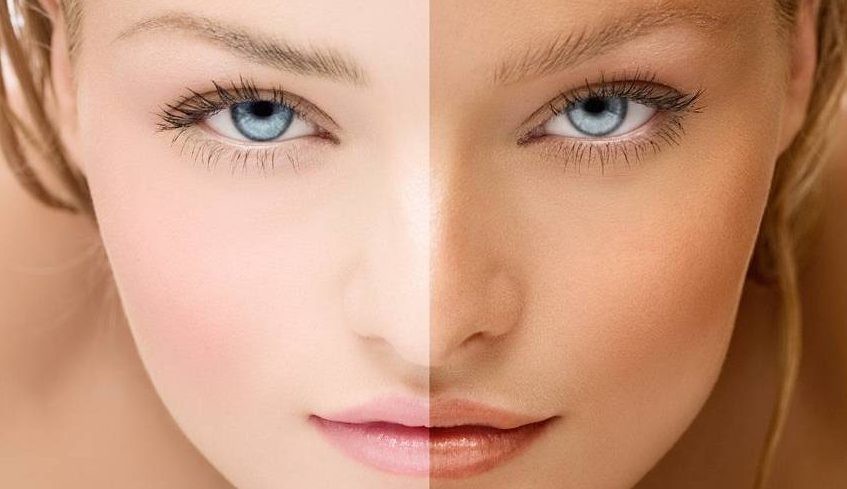Skin Bleaching: Tips for a Brighter Complexion
Skin bleaching has become a common practice among individuals seeking to achieve a lighter, more even skin tone. While the pursuit of a brighter complexion can stem from various motivations—ranging from cultural influences to personal preferences—it’s essential to approach skin bleaching with caution. This article will explore the various aspects of skin bleaching, including its methods, potential risks, and safer alternatives, along with tips for achieving a brighter complexion.
Understanding Skin Bleaching
Skin bleaching involves the use of products designed to lighten the skin’s pigmentation. These products typically contain active ingredients such as hydroquinone, corticosteroids, or certain acids that inhibit melanin production. Melanin is the pigment responsible for the color of the skin, hair, and eyes. When melanin production is reduced, the skin appears lighter.
While some individuals may seek skin bleaching to address conditions like hyperpigmentation, dark spots, or uneven skin tone, it’s crucial to understand the implications of these products. Some skin bleaching products can have serious side effects, including skin irritation, thinning, and even long-term damage.
Popular Methods of Skin Bleaching
1. Topical Creams and Lotions
Topical creams and lotions are the most commonly used skin bleaching products. These products often contain ingredients like hydroquinone, kojic acid, or glycolic acid. Hydroquinone is a potent skin-lightening agent that can effectively reduce pigmentation when used correctly.
However, prolonged use of hydroquinone can lead to side effects, such as ochronosis (a bluish-black discoloration of the skin). For this reason, it’s essential to use such products under the guidance of a dermatologist and to follow their recommendations strictly.
2. Chemical Peels
Chemical peels involve the application of a solution that removes the outer layers of skin. This process can help diminish dark spots and improve overall skin tone. Chemical peels come in various strengths, and the depth of the peel will determine the intensity of the treatment.
It’s essential to have chemical peels performed by a qualified professional to minimize the risk of complications, such as scarring or excessive irritation.
3. Laser Treatments
Laser treatments are another option for those seeking a brighter complexion. These treatments target melanin in the skin, effectively breaking it down. Depending on the type of laser used, treatments can vary in intensity and recovery time.
While laser treatments can produce significant results, they can also be costly and may require multiple sessions. Consulting a dermatologist is crucial to determine the best approach based on individual skin types and conditions.
4. Natural Remedies
Many people prefer natural remedies for skin bleaching due to their perceived safety. Ingredients like lemon juice, aloe vera, honey, and turmeric are often touted for their skin-lightening properties. While these natural options may provide some benefits, they tend to be less potent than clinical treatments and may not yield dramatic results.
When using natural remedies, it’s important to perform a patch test to check for any allergic reactions and to understand that consistency is key in seeing results.
Tips for Safer Skin Bleaching
1. Consult a Dermatologist
Before starting any skin bleaching regimen, consult a dermatologist. They can assess your skin type, discuss your goals, and recommend suitable products or treatments that minimize risks.
2. Use Sunscreen
Sun exposure can worsen hyperpigmentation and counteract the effects of skin bleaching. Using a broad-spectrum sunscreen with an SPF of 30 or higher is crucial in protecting your skin from harmful UV rays and preventing further discoloration.
3. Follow Instructions Carefully
If using over-the-counter products, always follow the instructions provided. Overuse or incorrect application can lead to adverse effects, including skin irritation and damage.
4. Patch Test New Products
Before applying any new product to your face, perform a patch test on a small area of skin to check for allergic reactions or irritation. This precaution helps prevent adverse reactions on larger areas of your skin.
5. Stay Hydrated
Proper hydration is vital for maintaining healthy skin. Drinking adequate water and using moisturizers can help keep your skin supple and may enhance the effectiveness of skin bleaching treatments.
6. Be Patient
Achieving a brighter complexion takes time. Avoid the temptation to use multiple products simultaneously or to apply them more frequently than recommended. Instead, be patient and allow your skin to adjust to any new treatments.
Understanding the Risks
While skin bleaching can provide desirable results for some, it’s essential to be aware of the potential risks involved. Some of the common side effects associated with skin bleaching products include:
- Skin Irritation: Many bleaching agents can cause redness, burning, or peeling, especially in sensitive skin.
- Ochronosis: Prolonged use of hydroquinone can lead to this condition, which results in darkening of the skin.
- Increased Sensitivity: Bleached skin may become more sensitive to sun exposure, leading to a higher risk of sunburn.
- Allergic Reactions: Some individuals may experience allergic reactions to certain ingredients in bleaching products.
To mitigate these risks, it’s vital to use products responsibly and consult with a healthcare professional.
Alternatives to Skin Bleaching
If you’re hesitant about skin bleaching, several alternatives can help achieve a brighter complexion without the associated risks.
1. Brightening Serums
Many skincare brands offer brightening serums containing vitamins C and E, niacinamide, or licorice extract. These ingredients can help improve skin tone and reduce the appearance of dark spots over time.
2. Regular Exfoliation
Regular exfoliation can help remove dead skin cells and promote a more radiant complexion. Consider using gentle exfoliating products or natural scrubs to avoid irritating your skin.
3. Healthy Lifestyle Choices
Eating a balanced diet rich in fruits, vegetables, and antioxidants can have a significant impact on your skin’s appearance. Additionally, getting regular exercise and sufficient sleep can contribute to a healthier, more vibrant complexion.
4. Professional Treatments
For those seeking a non-bleaching approach, professional treatments such as microdermabrasion or facials can help brighten the skin and improve overall texture without the risks associated with bleaching.
Why is Skin Rejuvenation Important?
Skin rejuvenation is essential for maintaining a youthful and healthy appearance. At Moderna Laser MedSpa, we offer various skin rejuvenation treatments designed to restore your skin’s vitality and radiance. From chemical peels to microneedling, our services address signs of aging, sun damage, and uneven texture. Our goal is to help you achieve a glowing complexion that enhances your confidence. To learn more about our skin rejuvenation options, visit modernalaser.com or call (702) 485-5488.






